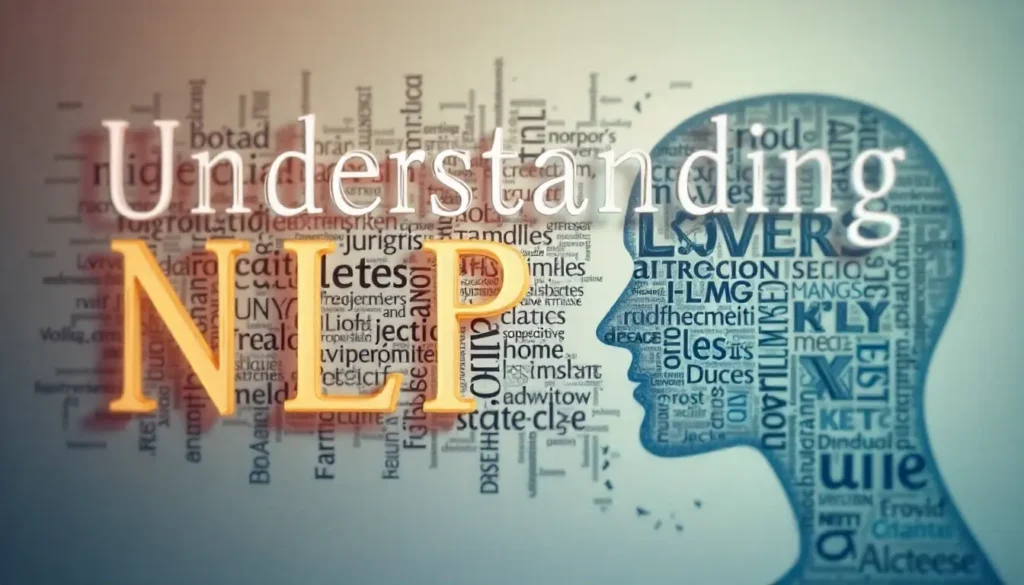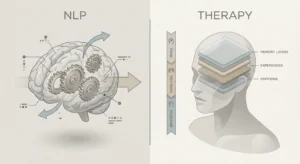Neuro-Linguistic Programming (NLP) transforms the way you negotiate by deepening emotional intelligence, sharpening communication, and strengthening persuasion. These NLP-based techniques help professionals build trust, decode unspoken cues, and create win-win outcomes that benefit all parties. Whether you’re in business, sales, or leadership, mastering NLP negotiation gives you the power to influence with empathy and precision.
In every career and relationship, negotiation is an unavoidable part of life from closing deals and managing teams to resolving conflicts or setting personal boundaries. Yet, many professionals rely too heavily on logic and facts, assuming persuasion is a purely rational process.
In truth, people make decisions emotionally first and then justify them logically. This is where Neuro-Linguistic Programming (NLP) becomes a game-changer. NLP helps negotiators tap into the psychology of language, tone, and body signals tools that connect to the subconscious mind, where real influence happens.
When you integrate NLP into your negotiation strategy, you don’t just communicate; you connect. You understand how the other person thinks, feels, and perceives the situation. This emotional intelligence gives you a clear psychological edge helping you stay confident, calm, and persuasive, even under pressure.
Key Takeaways
- Negotiation success depends more on emotional intelligence than logical argument.
- NLP techniques like mirroring, anchoring, reframing, and sensory language enhance trust and persuasion.
- The best negotiators use empathy, awareness, and authenticity to influence outcomes.
- NLP transforms negotiations from power struggles into collaborative conversations that build long-term relationships.
Understanding NLP: The Psychology Behind Communication

Neuro-Linguistic Programming, or NLP, explores how our thoughts (neuro), language (linguistic), and behaviors (programming) interact to shape outcomes. Developed in the 1970s, it focuses on the mental patterns behind successful communication and behavior change.
In negotiation, NLP equips you to understand and align with how people think and respond. Its core principles include:
- Rapport: Building a sense of trust and connection.
- Reframing: Shifting perspective to reduce conflict.
- Sensory Awareness: Reading nonverbal signals for deeper insight.
- Anchoring: Managing emotional states through learned triggers.
These techniques help negotiators communicate in a way that feels natural, empathetic, and strategically influential.
Why NLP Works in Negotiation
NLP works because it focuses on the subconscious mind, where over 90% of decision-making happens. When you learn to mirror someone’s tone, speak in their preferred sensory language, or reframe objections positively, you align your message with how their brain naturally processes information.
Traditional negotiation focuses on logic price, data, terms. NLP, on the other hand, focuses on perception and emotion the real drivers behind every “yes” or “no.”
Top Negotiation Tips Using NLP
Negotiation isn’t just about logic it’s about understanding people. Using Neuro-Linguistic Programming (NLP), you can read emotions, build instant trust, and influence outcomes with empathy. These NLP negotiation techniques help you communicate more effectively, stay calm under pressure, and turn potential conflicts into win-win agreements.
Build Instant Rapport Through Mirroring
Rapport is the foundation of every successful negotiation. With NLP, you can establish it instantly by mirroring the other person’s body language, tone, pace, and speech patterns.
For example, if someone speaks slowly and thoughtfully, match their rhythm rather than rushing your words. Subconsciously, they’ll feel you “get” them. This alignment fosters comfort and trust essential elements for open dialogue.
Use mirroring ethically. The goal isn’t imitation but synchronization a natural flow of connection that breaks down barriers and encourages honesty.
Use Anchoring to Stay Calm and Influence Emotion
Anchoring is the practice of associating a specific physical or verbal cue with a desired emotional state. For instance, before a big negotiation, you can anchor confidence by recalling a past success while pressing your thumb and forefinger together.
Later, during the meeting, repeating that gesture subconsciously reactivates the same confidence.
Anchoring can also help influence the other person’s emotions. A calm, steady tone can anchor safety and trust, while positive reinforcement (“That’s a great point”) anchors validation. Over time, these emotional cues create smoother, more cooperative discussions.
Reframe Objections into Opportunities
Every negotiator faces objections “Your price is too high,” “We’re not ready,” or “I need to think about it.” Instead of seeing these as roadblocks, NLP teaches you to reframe them as opportunities.
For example:
- Objection: “Your service is expensive.”
- Reframe: “Yes, it’s an investment and many clients find that the long-term savings far outweigh the initial cost.”
Reframing helps shift the emotional tone from defensiveness to collaboration. It shows empathy while subtly guiding the conversation back toward solutions.
Master Sensory Language (VAK Model)
People process information differently some are visual (“I see your point”), others auditory (“That sounds right”), and others kinesthetic (“I feel that works”).
By identifying someone’s VAK preference, you can tailor your language accordingly:
- Visual: “Let’s look at how this plan could work.”
- Auditory: “That sounds like a strong idea.”
- Kinesthetic: “I feel this approach aligns with our goals.”
Using their preferred language builds subconscious harmony, making your message more relatable and persuasive.
Use Calibrated Listening and Observation
NLP-trained negotiators don’t just hear words they observe tone, pauses, and facial cues. This is called calibrated listening.
For example, a slight change in pitch or hesitation may indicate doubt or discomfort. A sudden deep breath could signal relief or agreement.
By reading these subtle cues, you can adapt your approach in real time whether that means slowing down, clarifying a point, or reinforcing trust. Great negotiators “listen between the lines.”
Apply Embedded Commands for Subtle Persuasion
Embedded commands are phrases that gently influence without being overt. They work by weaving action-oriented suggestions into normal sentences.
Examples:
- “When you decide to go ahead with this partnership, you’ll see how much smoother your workflow becomes.”
- “As you think about the benefits, you might realize this is the right time to move forward.”
Used ethically, embedded commands help the listener visualize success with your proposal, naturally leading them toward agreement.
Manage Emotional States
Negotiation can trigger anxiety, frustration, or defensiveness. NLP provides tools to manage these emotions through visualization, anchoring, and breathing techniques.
Before entering a negotiation, visualize the meeting going smoothly. Picture yourself calm, confident, and solution-focused. If emotions rise mid-discussion, take a deep breath, ground yourself physically, and re-anchor to your calm state.
By mastering emotional control, you not only think more clearly but also influence the emotional tone of the conversation keeping it constructive and professional.
Visualize Win-Win Outcomes
NLP emphasizes collaborative thinking over competition. Visualization helps you set that intention.
Before any negotiation, mentally rehearse a win-win outcome imagine both sides satisfied, agreements signed, and relationships strengthened. This primes your brain for cooperation instead of defensiveness, making you naturally more open, flexible, and creative during discussions.
Real-World Applications of NLP in Negotiation
Business and Sales Negotiations

A sales executive uses NLP rapport and reframing to close high-stakes deals. Instead of arguing over price, they mirror the client’s communication style, reframe objections as opportunities, and use sensory language to illustrate value. The result? Higher conversions and stronger client trust.
In business, NLP turns transactional negotiations into relational partnerships where empathy, not pressure, drives success.
Leadership and Workplace Negotiations
In leadership, NLP helps managers handle team conflicts, motivate employees, and communicate change effectively. A leader who listens empathetically, mirrors body language, and reframes resistance into opportunity fosters unity instead of division.
NLP-trained leaders negotiate with their teams, not against them turning disagreements into dialogue and goals into shared vision.
Everyday Life Scenarios
NLP isn’t just for boardrooms. You can apply it in salary discussions, partnerships, family decisions, or even daily interactions.
Whether you’re negotiating chores with your kids or planning with your spouse, NLP’s principles of rapport, empathy, and reframing make communication more harmonious and outcome-driven.
FAQs
1. What is NLP in negotiation?
NLP helps negotiators use psychology and language to build trust, influence emotions, and create mutual understanding.
2. Can NLP really improve negotiation results?
Yes. Research and case studies show NLP enhances persuasion, cooperation, and confidence across business and leadership contexts.
3. Is NLP manipulation?
Not when used ethically. NLP promotes empathy, awareness, and clarity its purpose is understanding, not control.
4. How can I start learning NLP negotiation techniques?
Begin with three foundational tools: rapport-building, reframing, and sensory language. These skills create instant improvement in communication.
5. Can NLP help in virtual or online negotiations?
Absolutely. Matching tone, pacing, and verbal cues during video calls builds the same subconscious rapport as face-to-face interactions.
Conclusion: The Power of NLP in Negotiation
Mastering negotiation with Neuro-Linguistic Programming (NLP) goes beyond tactics; it’s about mastering human connection. NLP empowers you to understand not just what people say, but how and why they say it. By aligning language, emotion, and behavior, you can turn tense negotiations into collaborative, solution-focused discussions that strengthen relationships instead of straining them.
Whether you’re a leader inspiring your team, a business professional closing deals, or an individual navigating everyday conversations, NLP gives you the psychological advantage of empathy-driven influence. The most successful negotiators don’t overpower others they align perspectives, manage emotions, and build lasting trust.





